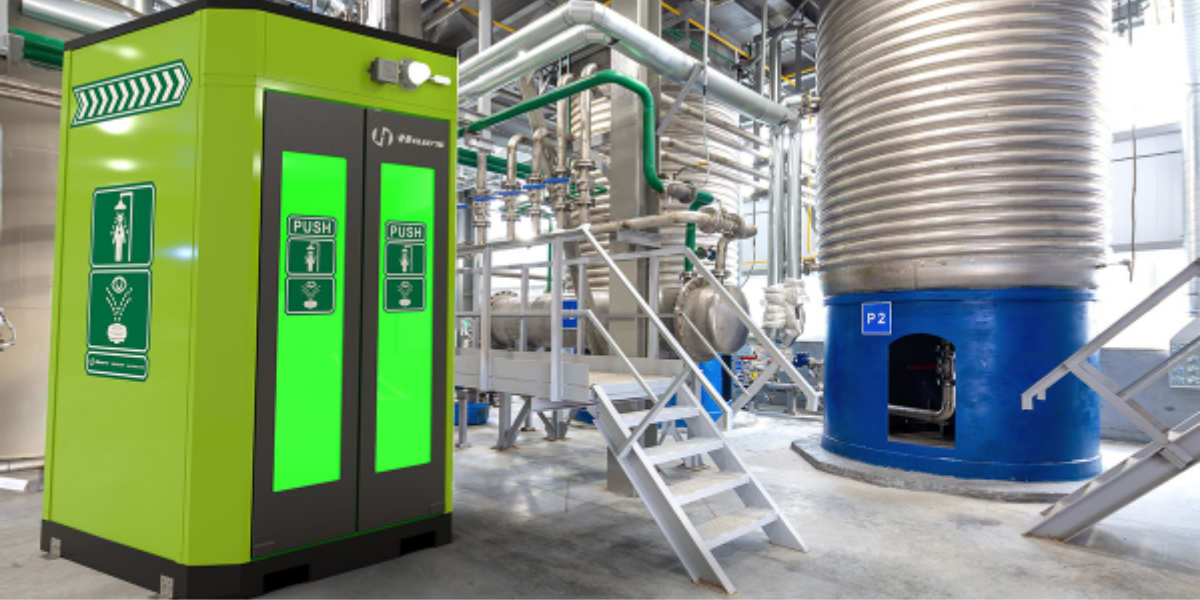
How to Ensure Weekly ANSI/ISEA Z358.1 Compliance
The American National Standards Institute (ANSI) created industry standard ANSI/ISEA Z358.1 in 1981 as a means of establishing minimum performance and use requirements for emergency eyewash and shower equipment. It’s a comprehensive guideline outlining specific parameters for the appropriate design, installation, performance, certification, use, and maintenance of emergency eyewash and shower equipment across various industries. So what happens during a global pandemic?
Staying compliant with ANSI/ISEA Z358.1 requires stringent and regular testing to ensure that proper functioning equipment is available at all times — and that requirement has not changed during the COVID-19 pandemic. While ANSI/ISEA Z358.1 has been revised in previous years, most recently in 2014, these updates were a reflection of changing environments and safety interpretations. The most current revisions include minor specifications for the design, manufacture, and installation of emergency locations, as well as the location and accessibility of safety equipment and adjusted measurements. At this time, no exceptions of any kind have been made during the COVID-19 health emergency that waive a facility’s responsibility for compliance.
Pandemic or otherwise, sections 4.6.2 and 4.6.5 of ANSI/ISEA Z358.1 require an emergency shower and eyewash equipment to be activated weekly, with a more rigorous evaluation conducted annually. This standard is the most effective way to ensure that workers are protected from eye, face and body injuries resulting from corrosive materials in workplace incidents such as spills, splashes, and blown particulates. Simply put, properly functioning equipment must be readily available at all times, no matter what is happening in the world at large. Ritz Safe
- Eye wash stations
- Installed eye wash stations
- Portable eye wash stations
- Shower and wash units
- Wash Booths
- Wash Parts
- All
In August 2016, OSHA fines for non-compliance increased a full 80%, putting violations for inappropriate or inadequate eyewash and shower equipment at risk of penalties exceeding $100,000. But the potential for fines should not be the only motivation for compliance. It’s critical to understand that compliance isn’t an annual or monthly responsibility, nor is it a responsibility that can be waived during health emergencies. Rather, compliance is a requirement that must be continuously observed.
Weekly Minimum Performance Requirements
ANSI/ISEA Z358.1 specifies three minimum requirements for the weekly inspection of emergency equipment:
- Every piece of emergency equipment must be activated weekly.
- Activation must ensure proper water flow to all device heads, including eyewash, eye/face wash, and shower.
- Duration of activation must be long enough to sufficiently flush any and all stagnant water from both the unit and all sections of piping outside of a constant circulation system, also known as “dead leg” portions. This timeframe is determined by the length of piping in which stagnant water might collect before it can reach the head(s) of the unit.
A best practice is recommended beyond these ANSI/INSEA minimum requirements. Additional weekly checks should also be conducted to ensure equipment is fully operational and ready to provide appropriate first aid in the event of a workplace emergency.
A common question for many companies is whether they are required to hire a certified tester to perform these weekly and annual inspections. The answer is no. There are no prerequisites or certification requirements for personnel to conduct safety equipment testing. However, a full understanding of the installation and performance requirements is essential. Equipment manufacturers offer various training tools, including online competent person training — particularly helpful during a pandemic — to ensure company personnel can become subject matter experts, capable of properly conducting tests. Today, many companies also have third-party inspections performed annually, which offer a level of credibility and assurance to the review process.
Facilities with hundreds of shower and eyewash units should seek to create as many subject matter experts as possible. Once trained, these experts will be capable of completing weekly checks quickly. Creating facility maps, making full testing kits readily available, and conducting periodic training classes can also help streamline the process. Keep in mind that worker protection should be a priority in every safety plan. It’s not enough to simply provide an emergency shower and eyewashes. Inspecting, testing, and monitoring equipment readiness and performance is the key to optimal response and a safer workplace.
Safety is an ongoing job, and it’s the responsibility of the workplace to ensure that workplace environments always meet current standards — pandemics notwithstanding.
Content produced by Eric Clark - Director of Haws Services
Want more info on Haws products? Contact us today and we will help - wecare@ritzsafety.com
-png.png)
